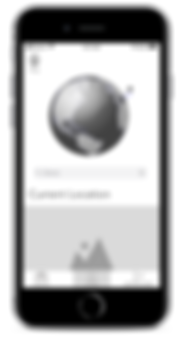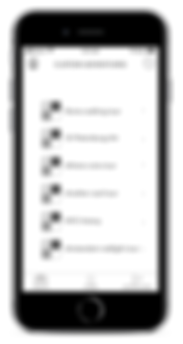top of page

AdvntR
AdvntR is a mobile app that brings a gamified experience to touring historical sights. It takes the user on a non-linear path through different sights. Unlike traditional guided tours, AdvntR empowers users to discover and explore on their own terms. It uses augmented reality to draw them deeper into the experience by showing them what history really looked like.
Timeline: 2 weeks
My Role: Creator, Lead UX Designer, Researcher, Visual Designer, Scrum Master
Tools: Sketch, InVision, Omnigraffle
Methods: User Interviews, Affinity Mapping, Personas, User Journey, Mid/Hi Fi Wireframes, User Flows, Site Map
Challenge:
People want a more personal sightseeing experience. They want it to feel like their own journey, and they want to discover things they would not have found on their own. Most of all, they want to be immersed and entertained, not just educated.
Initial Hypothesis:
If we provide millennial users with the ability to view historical sights via augmented reality, they will feel more entertained on their trips.
Phase 1: Research
Comparative Analysis:

Screeners:
38 responded
How often have you traveled in the past three years?
Have you ever been on a guided tour while traveling?



Have you ever used augmented reality?


Interview Insights:
Interviewed 8 people
-
User are enthusiastic about using augmented reality. They feel that it can help them accomplish tasks.
-
Users don’t like guided tours because of the high cost, lack of flexibility regarding scheduling, and the inability to see only the things they are interested in.
-
Users like guided tours because they like the “insider” information they get from the tour guides that the users would not have found on their own.
-
Users use their mobile phones to get directions and take pictures.
.png)
Study done by Impacts
Phase 2: Synthesis
We synthesized our data by creating an affinity map. From here, we organized our key findings into a persona and a user journey.
In our persona, we listed the goals, needs, and pain points we gathered from our user interviews. We created a journey map to layout the users' full touring experience.
Persona:
With our synthesized data, we created our persona: Riley.


MoSCoW Graph:
Before delving into the design phase, my team and I created a MoSCoW graph which lists features that would must have, should have, could have, and won't have in our application.

Phase 3: Design
We started our design phase with a design studio, which involved each of us creating our own paper sketches, and then sharing them with each other. From there, we combined our ideas on a white board, and then moved on to the mid fidelity wireframes.


Mid-Fi Wireframes:

Landing Page:
-
The user can search for a city to explore by either searching, clicking on one of the listed cities, or spinning the interactive globe and searching for a city there.
-
Users felt they did not want to search for their location; instead the application should already know where they are.

Sights Page:
-
The user can browse through different sights in the city before deciding which adventure to go on or make customize his own adventure.
-
Users wanted to search by theme/interest instead of browsing through the different sights to see.

Custom Adventures Page:
-
The user can create and search through custom tours.
-
Users often did not know what they wanted, and would rather be taken on a tour than create their own.

Map of Site:
-
Here is a map of a site (the Colosseum) that lists all of the hotspots for the user to visit to learn more information.
-
We realized this way of touring takes away some of the freedom we wanted to give the user.
-
This also fails to make the touring experience feel unique.
Research
Synthesis
Design
Phase 4: The Pivot
After some testing, we went to the whiteboard and decided to make a major pivot in our overall design. We decided to focus more on the gamification of the touring experience. We simplified the app to allow the user to only browse "adventures". The app would then tell the user to go to a specific sights, and when he gets there, the app would show the user a map of the sight with only a few hotspots. While walking around from hotspot to hotspot, the user would be notified about secret hotspots, thus giving more of a feel of exploration.



Map of site:
-
The app only shows a few select hotspots.
-
In between hotspots, the app shows a secret "treasure" hotspot, giving a bit of information about a Roman artifact, thus giving a more gamified, explorative experience.

Augmented Reality:
-
Once the user reaches a main hotspot, the app will ask to access the user's phone, and using AR, will show the user what the Roman Colosseum and gladiators looked like in their time.
The Pivot
Delivery
Next Steps:
-
Including audio tour guide
-
Multi-person adventures for tourists who travel in groups
-
A photo button that allows the user to take pictures throughout his adventure (including pictures of the AR experience.
-
The ability to share pictures with friends.
Next Steps
bottom of page